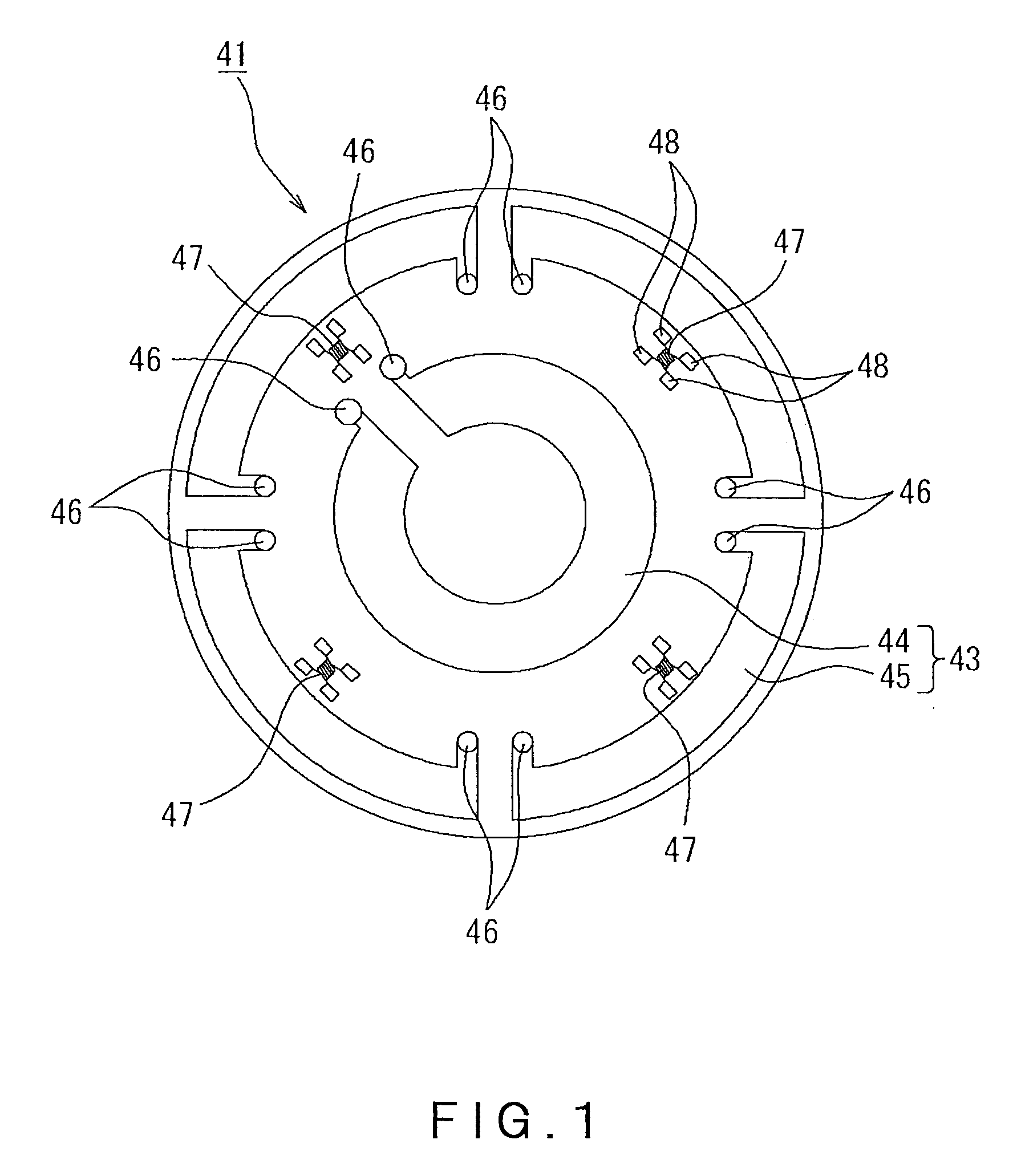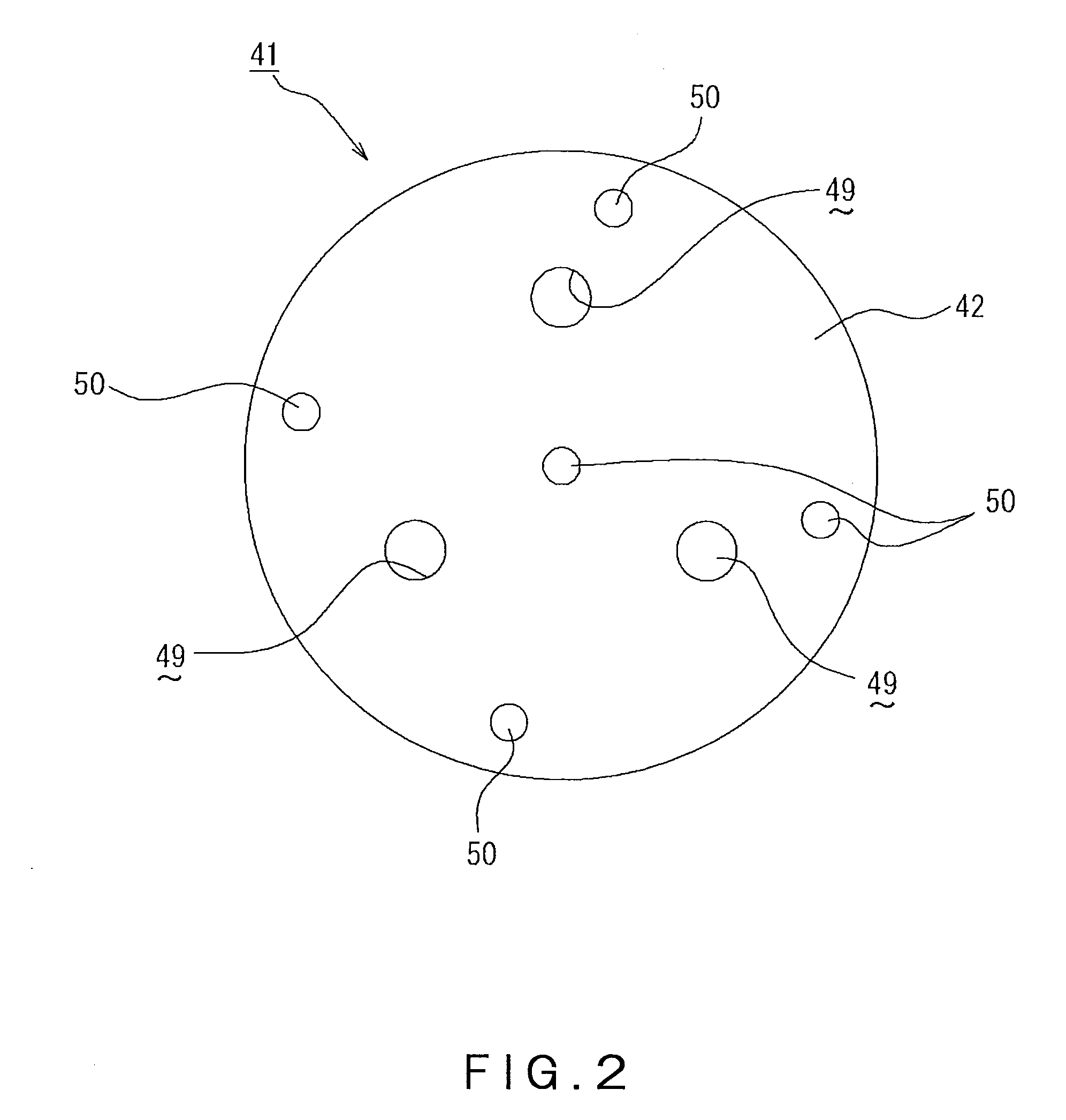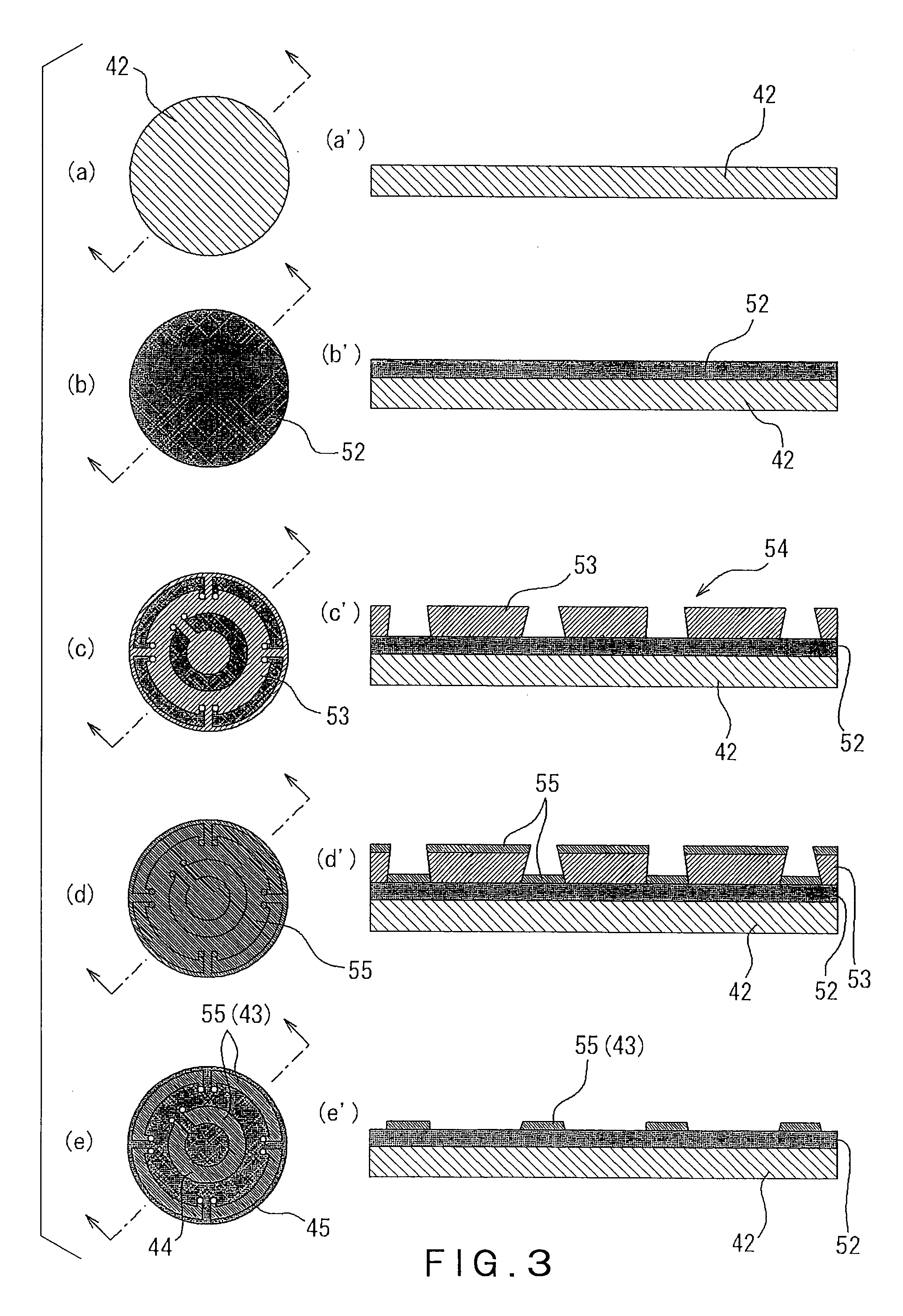Hot plate and process for producing the same
a technology of hot plate and process, which is applied in the direction of hot plate heating arrangement, ohmic resistance heating, electrical equipment, etc., can solve the problems of non-uniform value distribution of hot plate, affecting the uniformity of semiconductor wafer temperature, and affecting the accuracy of sensing semiconductor wafer temperature, so as to achieve uniform width and thickness, high accuracy, and high accuracy
- Summary
- Abstract
- Description
- Claims
- Application Information
AI Technical Summary
Benefits of technology
Problems solved by technology
Method used
Image
Examples
first embodiment
[0042]FIG. 1 is a view showing the back surface of a hot plate 41 useful for heat treatment according to the first embodiment of the present invention, and FIG. 2 is a view showing the front surface of the hot plate 41. The hot plate 41 shown in these figures is intended for a wafer with a thickness of 750 μm and a diameter of 300 mm, for example, and 0.5 to 3-mm thick wafers with a diameter of 340 mm can be placed on it.
[0043] The base plate of this hot plate 41 is a disc-shaped silicon base 42 with a thickness of 0.5 to 3 mm and a diameter of 340 mm, for example, and, on its back surface, a linear or belt-like heater 43 is provided by depositing, by sputtering, a film of platinum (Pt), a resistor, in a predetermined pattern such as a winding pattern, an arc, or a pattern with one stroke, in FIG. 1. In this Specification, the belt-like heater means not only a flat heating element but also a linear heating element that has been zigzagged, for example, to form a plane as a whole.
[0...
second embodiment
[0067]FIG. 9 is a view showing the front surface of a hot plate 41 according to the second embodiment of the present invention.
[0068] In the above-described first embodiment, the gap pins 50 are formed as gap-making protrusions by etching the silicon base 42. In this second embodiment, on the other hand, annular protrusions 75 uniform in thickness are made on the front surface of the silicon base 42 as the gap-making protrusions by the use of a polyimide resin, an insulating synthetic resin material, as shown in FIG. 9. In the case shown in FIG. 9, a first annular protrusion 76 is formed in the center of the silicon base 42, and a second annular protrusion 77, at the edge. These annular protrusions 75 are made in such positions that they do not cross the three pin insertion holes 49.
[0069] In the front surface of the silicon base 42, a vacuum holding hole 78 is made in the center, and vacuum holding grooves 79 are made so that they communicate with the vacuum holding hole 78, in o...
third embodiment
[0077] The third embodiment of the present invention is shown in FIG. 12. In this embodiment, temperature sensors 47 are formed not on the back surface but on the front surface of a silicon base 42. The third embodiment is advantageous in that since the temperature of a wafer W, an object of heating, can be controlled according to the temperature sensed at a point nearer the wafer W as compared with the case where temperature sensors 47 are formed on the back surface of a silicon base 42, the wafer W temperature can be controlled more accurately.
[Procedure for Making Temperature Sensors 47 on the Front Side (FIGS. 13 and 14)]
[0078] The procedure for making the temperature sensors 47 on the front surface of the silicon base 42 will be described. This procedure is shown in FIGS. 13 and 14. In FIGS. 13 and 14, views (a) to (g) on the left-hand side show the front surface of the hot plate 41, and views (a′) to (g′) on the right-hand side, a section of the hot plate 41 taken along the ...
PUM
| Property | Measurement | Unit |
|---|---|---|
| thickness | aaaaa | aaaaa |
| thickness | aaaaa | aaaaa |
| diameter | aaaaa | aaaaa |
Abstract
Description
Claims
Application Information
 Login to View More
Login to View More - R&D
- Intellectual Property
- Life Sciences
- Materials
- Tech Scout
- Unparalleled Data Quality
- Higher Quality Content
- 60% Fewer Hallucinations
Browse by: Latest US Patents, China's latest patents, Technical Efficacy Thesaurus, Application Domain, Technology Topic, Popular Technical Reports.
© 2025 PatSnap. All rights reserved.Legal|Privacy policy|Modern Slavery Act Transparency Statement|Sitemap|About US| Contact US: help@patsnap.com



